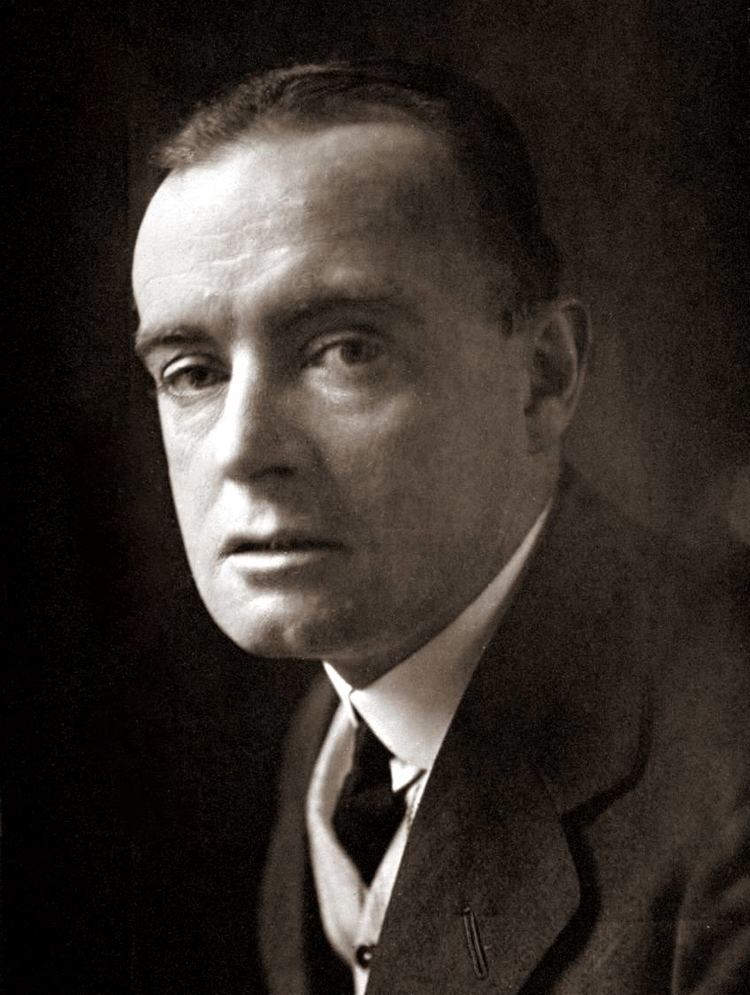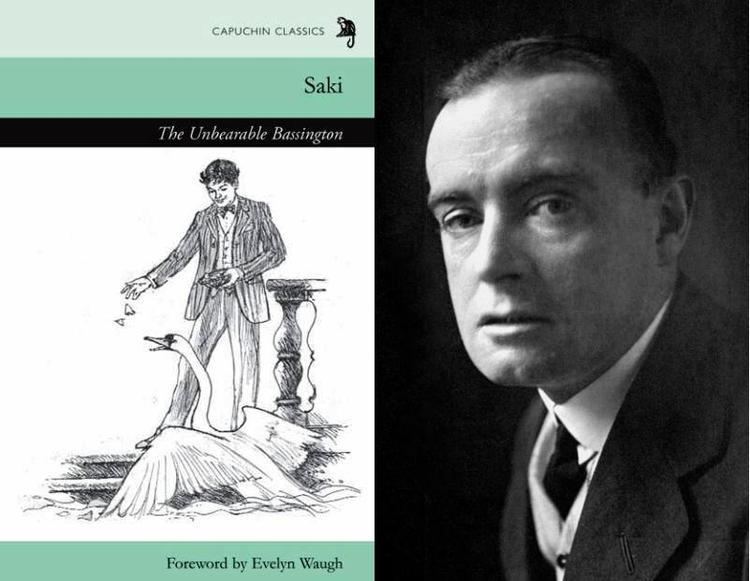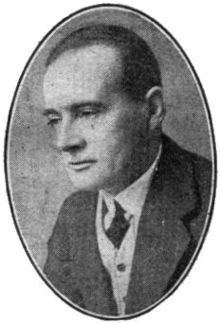Name Hector Munro Pen name Saki Full name Hector Hugh Munro Role Writer | Nationality British Occupation Author, Playwright Nickname H. H. Munro | |
 | ||
Movies Sredni Vashtar, Window, Conrad the Wise, Sunset in Venice Books The Unbearable Bassington, The Chronicles of Clovis, Beasts and Super‑Beasts, Reginald, The Westminster Alice Similar People Oscar Wilde, Virginia Woolf, Aldous Huxley, Andrew Birkin, Peter Haining | ||
Saki the improper stories of h h munro granada tv 1962
Hector Hugh Munro (18 December 1870 – 14 November 1916), better known by the pen name Saki, and also frequently as H. H. Munro, was a British writer whose witty, mischievous and sometimes macabre stories satirize Edwardian society and culture. He is considered a master of the short story, and often compared to O. Henry and Dorothy Parker. Influenced by Oscar Wilde, Lewis Carroll and Rudyard Kipling, he himself influenced A. A. Milne, Noël Coward and P. G. Wodehouse.
Contents
- Saki the improper stories of h h munro granada tv 1962
- The storyteller by saki
- Early life
- Writing career
- Death
- Sexuality
- Pen name
- Selected works
- The Interlopers
- Gabriel Ernest
- The Schartz Metterklume Method
- The Toys of Peace
- The Storyteller
- The Open Window
- The Unrest Cure
- Esm
- Sredni Vashtar
- Tobermory
- The Bull
- The East Wing
- Publications
- Radio
- Television
- Theatre
- Literary criticism and biography
- References

Besides his short stories (which were first published in newspapers, as was customary at the time, and then collected into several volumes), he wrote a full-length play, The Watched Pot, in collaboration with Charles Maude; two one-act plays; a historical study, The Rise of the Russian Empire, the only book published under his own name; a short novel, The Unbearable Bassington; the episodic The Westminster Alice (a parliamentary parody of Alice in Wonderland); and When William Came, subtitled A Story of London Under the Hohenzollerns, a fantasy about a future German invasion and occupation of Britain.

The storyteller by saki
Early life

Hector Hugh Munro was born in Akyab, British Burma, which was then still part of the British Raj, and was governed from Calcutta under the authority of the Viceroy of India. Saki was the son of Charles Augustus Munro, an Inspector General for the Indian Imperial Police, by his marriage to Mary Frances Mercer (1843–1872), the daughter of Rear Admiral Samuel Mercer. Her nephew, Cecil William Mercer, later became a famous novelist as Dornford Yates.

In 1872, on a home visit to England, Mary Munro was charged by a cow, and the shock caused her to miscarry. She never recovered and soon died.
After the death of Munro's mother, Charles Munro sent his children, including two-year-old Hector, home to England. The children were sent to Broadgate Villa, in Pilton village near Barnstaple, North Devon to be raised by their grandmother and paternal maiden aunts Charlotte and Augusta in a strict and puritanical household. It is said that they were most likely models for a few of his characters, notably 'The Lumber Room' and 'Sredni Vashtar". Leading slightly insular lives Munro and his siblings, during their early years were educated under tutelage of governesses. At the age of 12 the young Hector Munro was educated at Pencarwick School in Exmouth and then as a boarder at Bedford School.
In 1887, after his retirement, his father returned from Burma, and embarked upon a series of European travels with Hector and his siblings.
Hector followed his father in 1893 into the Indian Imperial Police and was posted to Burma, but successive bouts of fever meant his return home after only fifteen months.
Writing career
In 1896, he decided to move to London to make a living as a writer.
Munro started his writing career as a journalist for newspapers such as the Westminster Gazette, the Daily Express, the Morning Post, and magazines such as the Bystander and Outlook. His first book The Rise of the Russian Empire, a historical study modelled upon Edward Gibbon's The Decline and Fall of the Roman Empire, appeared in 1900, under his real name, but proved to be something of a false start.
Whilst he was writing The Rise of the Russian Empire, he made his first foray into short story writing and published a piece called 'Dogged' in St Paul's in February 1899. He then moved into the world of political satire in 1900 with a collaboration with Francis Carruthers Gould entitled "Alice in Westminster". Gould produced the sketches, and Munro wrote the text accompanying them, using the pen-name "Saki" for the first time. The series lampooned political figures of the day ('Alice in Downing Street' begins with the memorable line, '"Have you ever seen an Ineptitude?"' - referring to a zoomorphised Arthur Balfour), and was published in the Liberal Westminster Gazette.
In 1902 he moved to that bastion of Toryism, The Morning Post, described as one of the 'organs of intransigence' by Stephen Koss, to work as a foreign correspondent, first in the Balkans, and then in Russia, where he was witness to the 1905 revolution in St Petersburg. He then went on to Paris, before returning to London in 1908, where the agreeable life of a man of letters with a brilliant reputation awaited him.' In the intervening period Reginald had been published in 1904, the stories having first appeared in the Westminster Gazette, and all this time he was writing sketches for the Morning Post, the Bystander, and the Westminster Gazette. He kept a place in Mortimer Street, wrote, played bridge at the Cocoa Tree Club, and lived simply. Reginald in Russia appeared in 1910, and The Chronicles of Clovis was published in 1911, and Beasts and Super-Beasts in 1914, along with many other short stories that appeared in newspapers not published in collections in his lifetime.
He also produced two novels, The Unbearable Bassington (1912) and When William Came (1913).
Death
At the start of the First World War Munro was 43 and officially over-age to enlist, but he refused a commission and joined the 2nd King Edward's Horse as an ordinary trooper. He later transferred to the 22nd Battalion of the Royal Fusiliers, in which he rose to the rank of lance sergeant. More than once he returned to the battlefield when officially still too sick or injured. In November 1916 he was sheltering in a shell crater near Beaumont-Hamel, France, during the Battle of the Ancre, when he was killed by a German sniper. According to several sources, his last words were "Put that bloody cigarette out!"
Munro has no known grave. He is commemorated on Pier and Face 8C 9A and 16A of the Thiepval Memorial.
In 2003 English Heritage marked Munro's flat at 97 Mortimer Street, in Fitzrovia with a blue plaque.
After his death his sister Ethel destroyed most of his papers and wrote her own account of their childhood, which appeared at the beginning of The Square Egg and Other Sketches (1924). Rothay Reynolds, a close friend, wrote a relatively lengthy memoir in The Toys of Peace (1919), but aside from this, the only other biographies of Munro are Saki: A Life of Hector Hugh Munro (1982) by A. J. Langguth, and The Unbearable Saki (2007) by Sandie Byrne. All later biographies have unfortunately had to draw heavily upon Ethel's account of her brother's life.
Sexuality
Munro was homosexual, but in Britain at that time sexual activity between men was a crime. The Cleveland Street scandal (1889), followed by the downfall of Oscar Wilde (1895), meant "that side of [Munro's] life had to be secret".
Pen-name
The pen name "Saki" is most commonly assumed to be a reference to the cupbearer in the Rubáiyát of Omar Khayyam. Both Rothay Reynolds and Ethel Munro confirm this.
This reference is stated as fact by Emlyn Williams in his introduction to a Saki anthology published in 1978. However, "Saki" may also or instead be a reference to the South American monkey of that name, which at least two commentators, Tom Sharpe and Will Self, have connected to the "small, long-tailed monkey from the Western Hemisphere" that is a central character in "The Remoulding of Groby Lington".
Selected works
Much of Saki's work contrasts the conventions and hypocrisies of Edwardian England with the ruthless but straightforward life-and-death struggles of nature. Writing in The Guardian to mark the centenary of Saki's death, Stephen Moss noted, "In many of his stories, stuffy authority figures are set against forces of nature – polecats, hyenas, tigers. Even if they are not eaten, the humans rarely have the best of it".
"The Interlopers"
"The Interlopers" is a story about two men, Georg Znaeym and Ulrich von Gradwitz, whose families have fought over a forest in the eastern Carpathian Mountains for generations. Ulrich's family legally owns the land, and so considers Georg an interloper when he hunts in the forest. But Georg, believing that the forest rightfully belongs to his family, hunts there often and believes that Ulrich is the real interloper for trying to stop him. One winter night, Ulrich catches Georg hunting in the forest. Neither man can shoot the other without warning, as they would soil their family’s honor, so they hesitate to acknowledge one another. In an "act of God", a tree branch suddenly falls on each of them, trapping them both under a log. Gradually they realize the futility of their quarrel, become friends and end the feud. They then call out for their men’s assistance and, after a brief period, Ulrich makes out nine or ten figures approaching over a hill. The story ends with Ulrich’s realization that the approaching figures on the hill are actually wolves searching for a meal. The story's conclusion implies that the wolves are the true residents of the forest and the humans, Georg and Ulrich, are both interlopers there.
"Gabriel-Ernest"
"Gabriel-Ernest" starts with a warning: "There is a wild beast in your woods …" As the story proceeds we learn from the narrator that Gabriel, a naked boy sunbathing by the river, is indeed wild, feral, in fact a werewolf. The climax comes when Gabriel is revealed to have taken a small child home from Sunday school. A pursuit ensues, but Gabriel and the child disappear near a river. The only items found are Gabriel's clothes, and the two are never seen again.
"The Schartz-Metterklume Method"
At a railway station an arrogant and overbearing woman, Mrs Quabarl, mistakes the mischievous Lady Carlotta, who has been inadvertently left behind by a train, for the governess, Miss Hope, whom she has been expecting, Miss Hope having erred about the date of her arrival. Lady Carlotta decides not to correct the mistake, acknowledges herself as Miss Hope, a proponent of "the Schartz-Metterklume method" of making children understand history by acting it out themselves, and chooses the Rape of the Sabine Women (exemplified by a washerwoman's two girls) as the first lesson.
"The Toys of Peace"
Preferring not to give her young sons toy soldiers or guns, and having taken away their toy depicting the Siege of Adrianople, Eleanor instructs her brother Harvey to give them innovative "peace toys" as an Easter present. When the packages are opened young Bertie shouts "It's a fort!" and is disappointed when his uncle replies "It's a municipal dustbin." The boys are initially baffled as to how to obtain any enjoyment from models of a school of art and a public library, or from little figures of John Stuart Mill, Felicia Hemans and Sir John Herschel. Youthful inventiveness finds a way, however, as the boys combine their history lessons on Louis XIV with a lurid and violent play-story about the invasion of Britain and the storming of the Young Women's Christian Association. The end of the story has Harvey reporting failure to Eleanor, explaining "We have begun too late."
"The Storyteller"
An aunt is travelling by train with her two nieces and a nephew. The children are inquisitive and mischievous. A bachelor is also travelling in the same compartment. The aunt starts telling a moralistic story, but is unable to satisfy the children's curiosity. The bachelor butts in and tells a story in which a "good" person ends up being devoured by a wolf, to the children's delight. The bachelor is amused by the thought that in the future the children will embarrass their guardian by begging to be told "an improper story."
"The Open Window"
Framton Nuttel, a nervous man, has come to stay in the country for his health. His sister, who thinks he should socialise while he is there, has given him letters of introduction to families in the neighbourhood whom she got to know when she was staying there a few years previously. Framton goes to visit Mrs Sappleton and, while he is waiting for her to come down, is entertained by her fifteen-year-old, witty niece. The niece tells him that the French window is kept open, even though it is October, because Mrs Sappleton believes that her husband and her brothers, who were drowned in a bog three years before, will come back one day. When Mrs Sappleton comes down she talks about her husband and her brothers, and how they are going to come back from shooting soon, and Framton, believing that she is deranged, tries to distract her by talking about his health. Then, to his horror, Mrs Sappleton points out that her husband and her brothers are coming, and he sees them walking towards the window with their dog. He thinks he is seeing ghosts and runs away. Mrs Sappleton cannot understand why he has run away and, when her husband and her brothers come in, she tells them about the odd man who has just left. The niece explains that Framton Nuttel ran away because of the spaniel: he is afraid of dogs since he was hunted by a pack of stray dogs in India and had to spend a night in the newly dug grave with creatures grinning and foaming just above him. The last line summarizes the story, saying of the niece, "Romance at short notice was her speciality."
"The Unrest-Cure"
Saki's recurring hero Clovis Sangrail, a sly young man, overhears the complacent middle-aged Huddle complaining of his own addiction to routine and aversion to change. Huddle's friend makes the wry suggestion that he needs an "unrest-cure" (the opposite of a rest cure), to be performed, if possible, in the home. Clovis takes it upon himself to "help" the man and his sister by involving them in an invented outrage that will be a "blot on the twentieth century".
"Esmé"
A baroness tells Clovis a story about a hyena that she and her friend Constance encountered while out fox hunting. Later, the hyena follows them, stopping briefly to eat a gypsy child. Shortly after this, the hyena is killed by a motorcar. The baroness immediately claims the corpse as her beloved dog Esmé, and the guilty owner of the car gets his chauffeur to bury the animal and later sends her a diamond brooch to make up for her loss.
"Sredni Vashtar"
A sickly child named Conradin is raised by his aunt and guardian, Mrs De Ropp, who "would never... have confessed to herself that she disliked Conradin, though she might have been dimly aware that thwarting him 'for his good' was a duty which she did not find particularly irksome". Conradin rebels against his aunt and her choking authority. He invents a religion in which his pole-cat ferret is imagined as a vengeful deity, and Conradin prays that "Sredni Vashtar" will deliver retribution upon De Ropp. When De Ropp attempts to dispose of the animal, it attacks and kills her. The entire household is shocked and alarmed, but Conradin calmly butters another piece of toast.
"Tobermory"
At a country-house party, one guest, Cornelius Appin, announces to the others that he has perfected a procedure for teaching animals human speech. He demonstrates this on his host's cat, Tobermory. Soon it is clear that animals are permitted to view many private things on the assumption that they will remain silent, such as the host Sir Wilfred's commentary on one guest's intelligence and the hope that she will buy his car, or the implied sexual activities of some of the other guests. The guests are angered, especially when Tobermory runs away to pursue a rival cat, but plans to poison him fail when Tobermory is instead killed by the rival cat. "An archangel ecstatically proclaiming the Millennium, and then finding that it clashed unpardonably with Henley and would have to be indefinitely postponed, could hardly have felt more crestfallen than Cornelius Appin at the reception of his wonderful achievement." Appin is killed shortly afterwards when attempting to teach an elephant in a zoo in Dresden to speak German.
"The Bull"
Tom Yorkfield, a farmer, receives a visit from his half-brother Laurence. Tom has no great liking for Laurence or respect for his profession as a painter of animals. Tom shows Laurence his prize bull and expects him to be impressed, but Laurence nonchalantly tells Tom that he has sold a painting of a different bull, which Tom has seen and does not like, for three hundred pounds. Tom is angry that a mere picture of a bull should be worth more than his real bull. This and Laurence's condescending attitude give him the urge to strike him. Laurence, running away across the field, is attacked by the bull, but is saved by Tom from serious injury. Tom, looking after Laurence as he recovers, feels no more rancour because he knows that, however valuable Laurence's painting might be, only a real bull like his can attack someone.
"The East Wing"
This is a "rediscovered" short story that was previously cited as a play. A house party is beset by a fire in the middle of the night in the east wing of the house. Begged by their hostess to save "my poor darling Eva – Eva of the golden hair," Lucien demurs, on the grounds that he has never even met her. It is only on discovering that Eva is not a flesh-and-blood daughter but Mrs Gramplain's painting of the daughter she wished that she had had, and which she has faithfully updated with the passing years, that Lucien declares a willingness to forfeit his life to rescue her, since "death in this case is more beautiful," a sentiment endorsed by the Major. As the two men disappear into the blaze, Mrs Gramplain recollects that she "sent Eva to Exeter to be cleaned". The two men have lost their lives for nothing.
Publications
Posthumous publications:
Radio
The 5th broadcast of Orson Welles' series for CBS Radio, The Mercury Theatre on the Air, from 8 August 1938, dramatizes three short stories rather than one long story. The second of the three stories is "The Open Window."
Television
A dramatisation of "The Schartz-Metterklume Method" was an episode in the series Alfred Hitchcock Presents in 1960.
Saki: The Improper Stories of H. H. Munro (a reference to the ending of "The Story Teller") was an eight-part series produced by Philip Mackie for Granada Television in 1962. Actors involved included Mark Burns as Clovis, Fenella Fielding as Mary Drakmanton, Heather Chasen as Agnes Huddle, Richard Vernon as the Major, Rosamund Greenwood as Veronique and Martita Hunt as Lady Bastable.
Who Killed Mrs De Ropp?, a BBC TV production in 2007, starring Ben Daniels and Gemma Jones, showcased three of Saki's short stories, "The Storyteller", "The Lumber Room" and "Sredni Vashtar".
